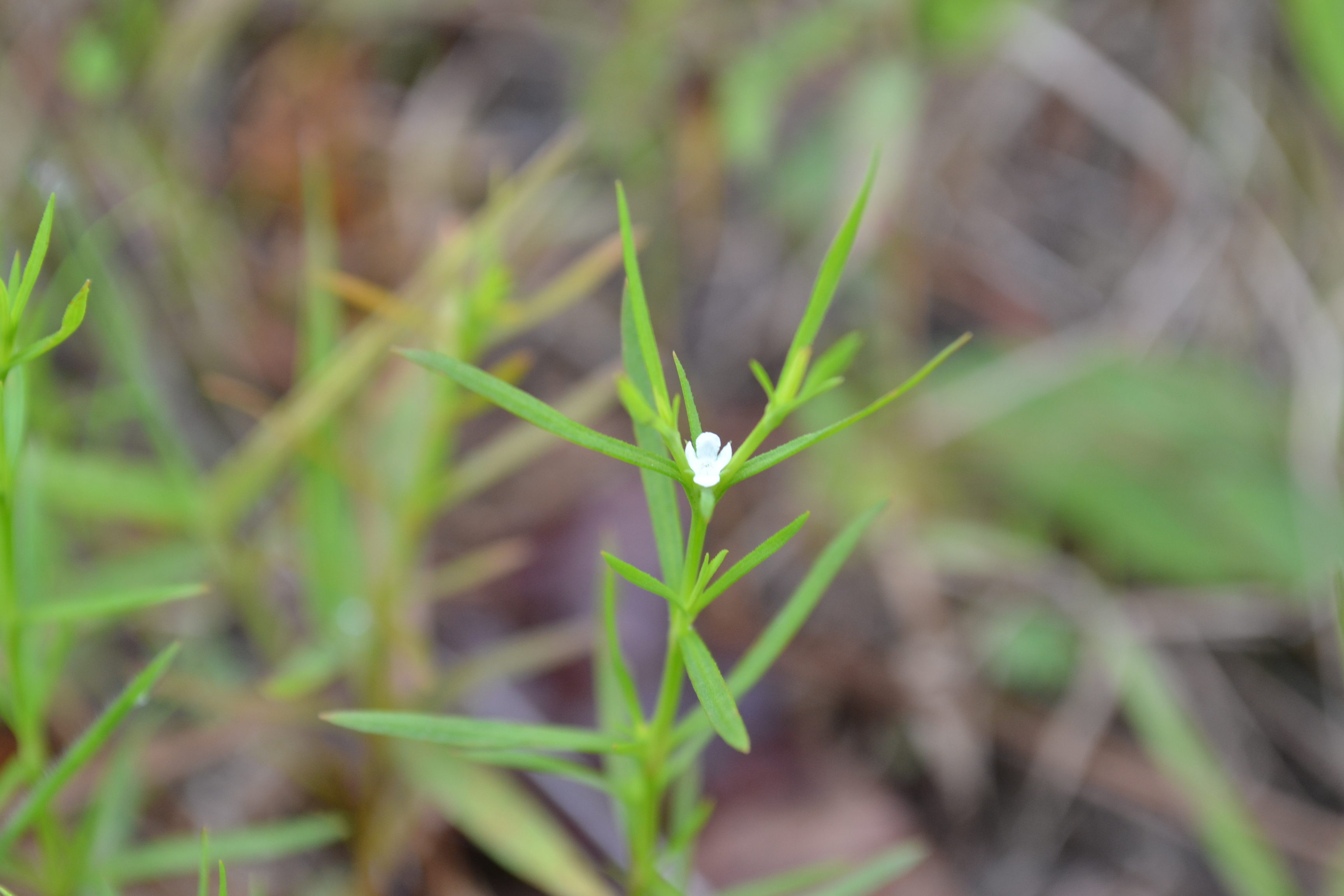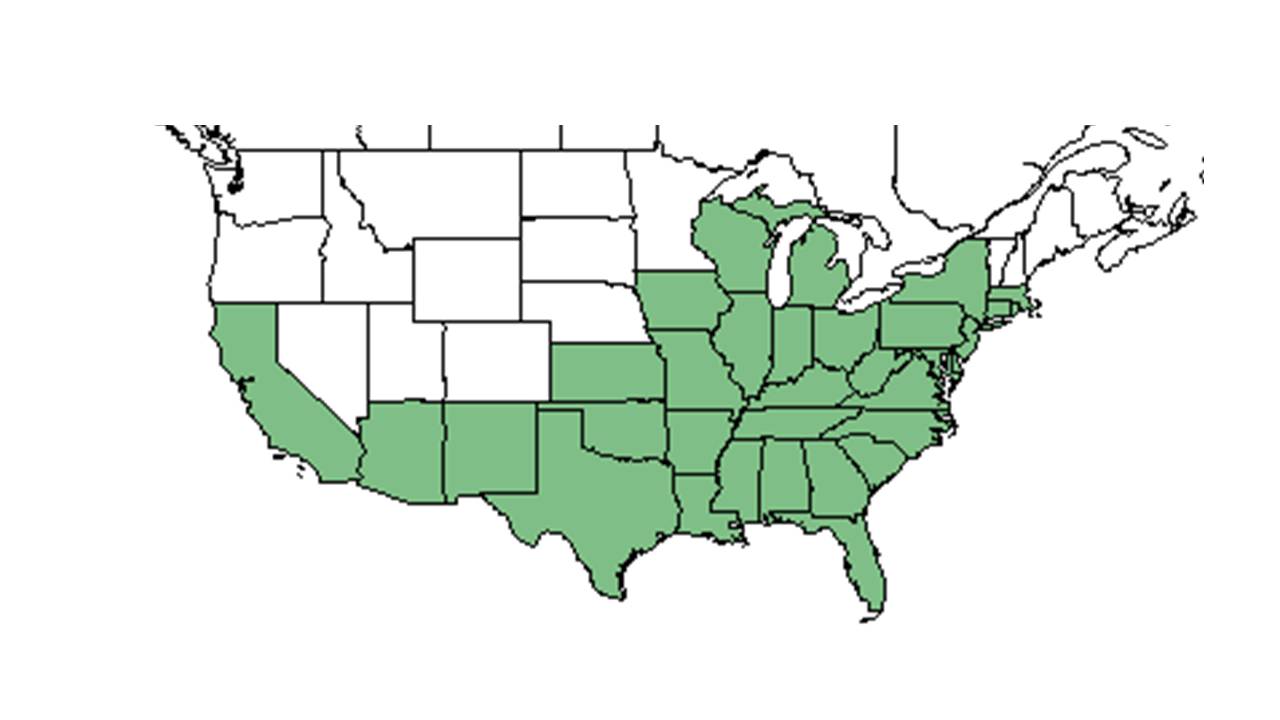Difference between revisions of "Diodella teres"
| Line 19: | Line 19: | ||
Common name: poorjoe | Common name: poorjoe | ||
| + | |||
Synonym name: ''Diodia teres'' | Synonym name: ''Diodia teres'' | ||
==Taxonomic notes== | ==Taxonomic notes== | ||
Revision as of 20:19, 21 January 2016
| Diodella teres | |
|---|---|

| |
| Photo taken by Kevin Robertson | |
| Scientific classification | |
| Kingdom: | Plantae |
| Division: | Magnoliophyta - Flowering plants |
| Class: | Magnoliopsida – Dicotyledons |
| Order: | Rubiales |
| Family: | Rubiaceae |
| Genus: | Diodella |
| Species: | D. teres |
| Binomial name | |
| Diodella teres Walter | |

| |
| Natural range of Diodella teres from USDA NRCS Plants Database. | |
Common name: poorjoe
Synonym name: Diodia teres
Contents
Taxonomic notes
Description
Distribution
Ecology
Habitat
D. teres occurs in semi-shaded to open areas and well-drained sandy soil (FSU Herbarium). It can be found in longleaf pine savannas,[1] turkey oak sand ridges, mixed hardwood forests, exposed coastal dunes, coastal hammocks, and scrub hills (FSU Herbarium).
This species decreased significantly in response to clearcutting and thinning. This is evidence that Diodella teres prefers relatively undisturbed areas as to disturbed areas.[2] However, it still occurs in some disturbed habitats, including roadsides and railroad yards (FSU Herbarium).
Associated species include Toxicodendron, Rubus cuneifolius, Pteridium aquilinum, Elephantopus tomentosus, Triplasis purpurea, Crotalaria, Desmodium, D. virginiana, Serenoa repens, live oak, pine (FSU Herbarium).
Phenology
Flowering has been observed in June through October, and fruiting has been observed in June through November (FSU Herbarium).
Seed dispersal
Seed bank and germination
Fire ecology
This species has been found frequently burned areas, including annually burned pinelands (FSU Herbarium). It appears to benefit especially from high fire frequency (in the Osceola study plots)[3]
Pollination
The following Hymenoptera families and species were observed visiting flowers of Diodia teres at Archbold Biological Station (Deyrup 2015):
Halictidae: Augochloropsis sumptuosa
Sphecidae: Prionyx thomae
Use by animals
It is an important food to bobwhites in the summer months.[4] The bee Augochloropsis suinptzosa was found on D. teres.[5]
Diseases and parasites
Conservation and Management
Cultivation and restoration
Photo Gallery
References and notes
Deyrup, M.A. and N.D. 2015. Database of observations of Hymenoptera visitations to flowers of plants on Archbold Biological Station, Florida, USA.
Florida State University Robert K. Godfrey Herbarium database. URL: http://herbarium.bio.fsu.edu. Last accessed: June 2014. Collectors: Loran C. Anderson, Tom Barnes, A. F. Clewell, D. L. Fichtner, J. P. Gillespie, R. K. Godfrey, Bruce Hansen, R. Kral, Robert L. Lazor, Cecil R. Slaughter, Gwynn W. Ramsey, H. Larry Stripling, Brenda Herring, Wendy Zomlefer, Mabel Kral, D. W. Mather, F. C. Craighead, R. A. Norris, R. Komarek, Edwin L. Tyson, and JoAnn Hansen. States and Counties: Florida: Alachua, Bay, Citrus, Dade, Duval, Escambia, Franklin, Highland, Holmes, Jefferson, Lake, Leon, Liberty, Madison, Marion, Okaloosa, Orange, Polk, Santa Rosa, St. Johns, Taylor, Wakulla, and Walton. Georgia: Grady and Thomas. Other countries: Panama.
- ↑ Heuberger, K. A. and F. E. Putz (2003). "Fire in the suburbs: ecological impacts of prescribed fire in small remnants of longleaf pine (Pinus palustris) sandhill." Restoration Ecology 11: 72-81.
- ↑ Brockway, D. G. and C. E. Lewis (2003). "Influence of deer, cattle grazing and timber harvest on plant species diversity in a longleaf pine bluestem ecosystem." Forest Ecology and Management 175: 49-69.
- ↑ Glitzenstein, J. S., D. R. Streng, et al. (2003). "Fire frequency effects on longleaf pine (Pinus palustris, P.Miller) vegetation in South Carolina and northeast Florida, USA." Natural Areas Journal 23: 22-37.
- ↑ Jones, J. D. J. and M. J. Chamberlain (2004). "Efficacy of herbicides and fire to improve vegetative conditions for northern bobwhites in mature pine forests." Wildlife Society Bulletin 32: 1077-1084.
- ↑ Deyrup, M. J. E., and Beth Norden (2002). "The diversity and floral hosts of bees at the Archbold Biological Station, Florida (Hymenoptera: Apoidea)." Insecta mundi 16(1-3).